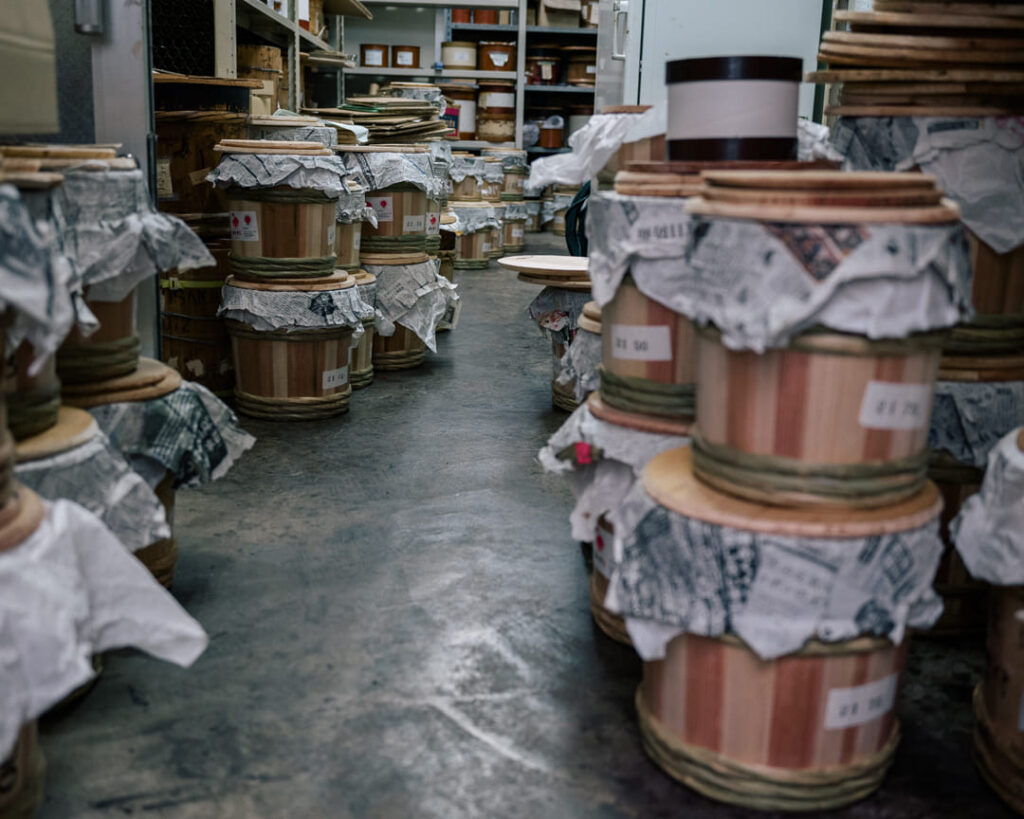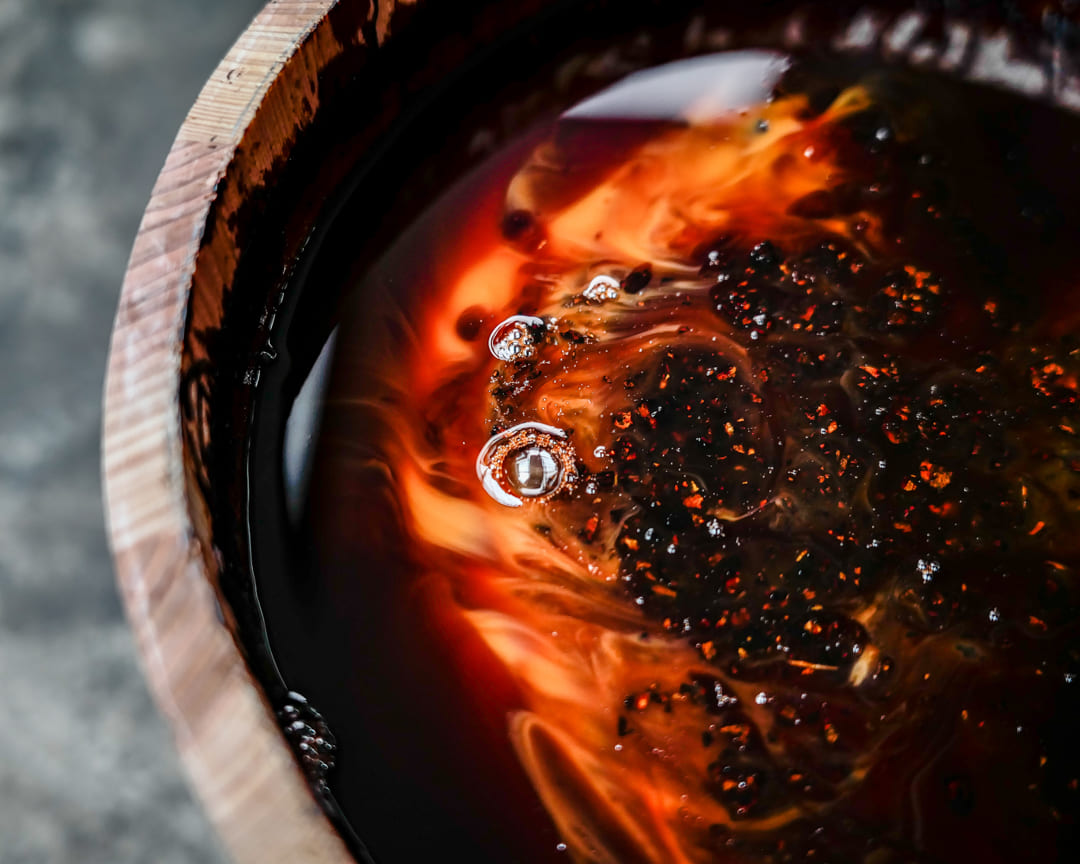
Urushi Refining and Blending
- Ongoing
Urushi: A Sustainable Resource from the Jomon Period
Urushi is a natural resin sourced exclusively from Asia, harvested from the Urushi tree. It has been used for thousands of years, dating back to the Jomon period (around 10,000 years ago), as a coating and adhesive. The resin is carefully collected by artisans who score the tree, allowing the resin to ooze out slowly over several months. Only about 200g of resin can be harvested from a tree after 10–15 years of growth.
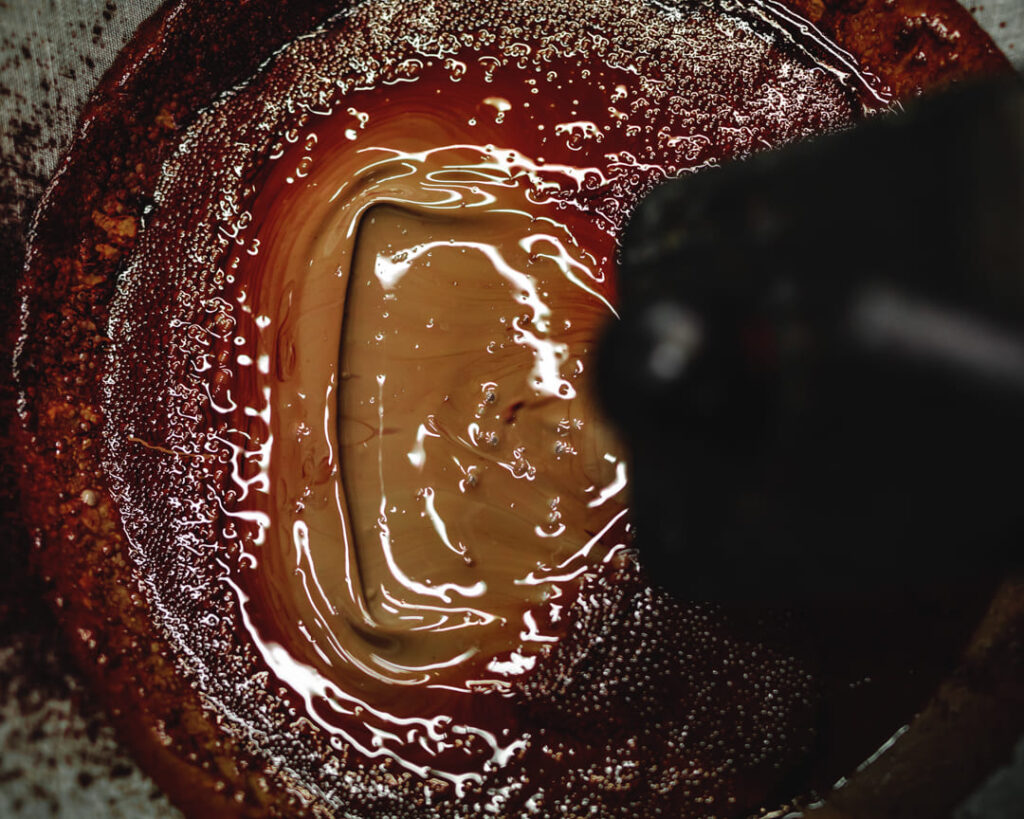
Urushi’s finish is smooth and warm, resembling the softness of a baby’s skin. It also boasts natural antibacterial properties, making it both safe and sustainable. Its unique gloss and texture cannot be replicated by synthetic paints, developing a natural shine over time. By using Urushi, we cultivate a deeper appreciation for the objects we cherish, allowing them to be passed down through generations.
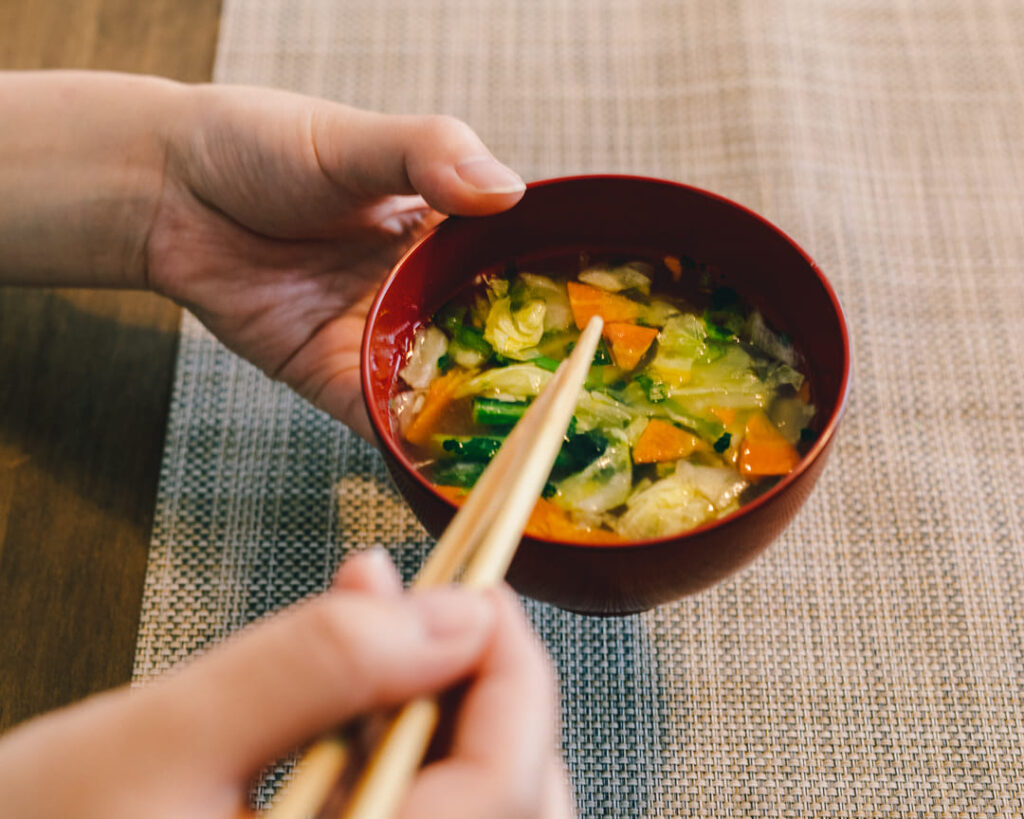
A Tradition of Urushi Refining
With over 100 years of history as an Urushi specialist, Tsutsumi Asakichi Urushi Inc. is but a fleeting moment in the 10,000-year history of Urushi. The traditional refining techniques passed down from our founder, Asakichi Tsutsumi, are a cornerstone of our legacy, and we take pride in continuing this craftsmanship for future generations.
We source Urushi sap from producers, then refine and blend it to deliver high-quality Urushi to artisans and craftsmen. By removing impurities from raw Urushi, such as wood chips, and refining it into various types, including black and red Urushi, we cater to a wide range of specific needs. Combining traditional methods with innovative techniques, we ensure we meet every customer’s requirements.
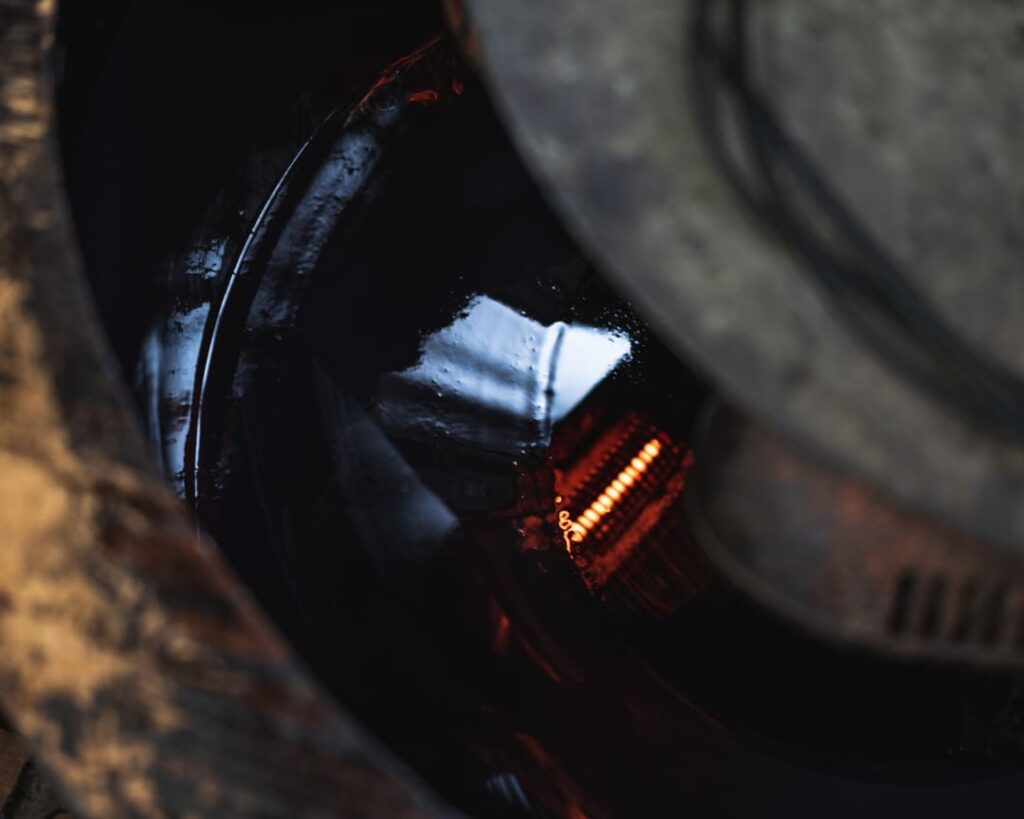
Urushi Refining – A Process in Harmony with Nature
After the raw Urushi is filtered through Urushi koshi to remove impurities, it can be used as a base layer or further refined into coating Urushi. The refining process involves adding the raw Urushi into a special stirring vessel (Krome-bachi), where it undergoes two crucial steps: Nayashi (stirring) and Krome (moisture adjustment). Each batch of Urushi is unique, and the results vary depending on factors like the characteristics of the Urushi and the changing climate. Drawing on our craftsmen’s expertise and accumulated data, we create various types of Urushi tailored to the needs of our clients. The process of refining Urushi is a true “dialogue with nature.”
Storage of Urushi Sap
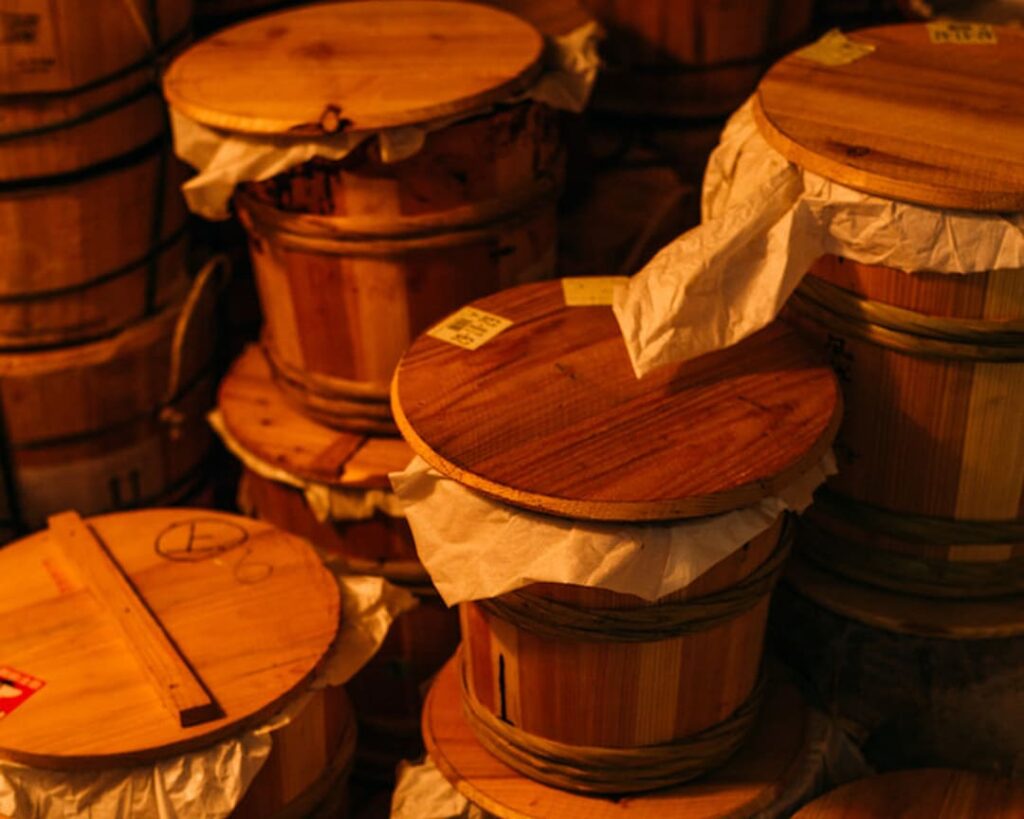
The raw Urushi sap, known as “Arami Urushi” sent from the production area is stored in our large refrigerators year-round, where it is temperature-controlled to maintain the freshness of the raw material and ensure consistent quality.
The Filtering Process of Arami Urushi
The filtering process called “Urushi Koshi” removes wood chips and other impurities from the stored Arami Urushi. This results in the creation of clean, filtered raw Urushi, known as “Ki-Urushi,” which is then ready for refinement.
1.
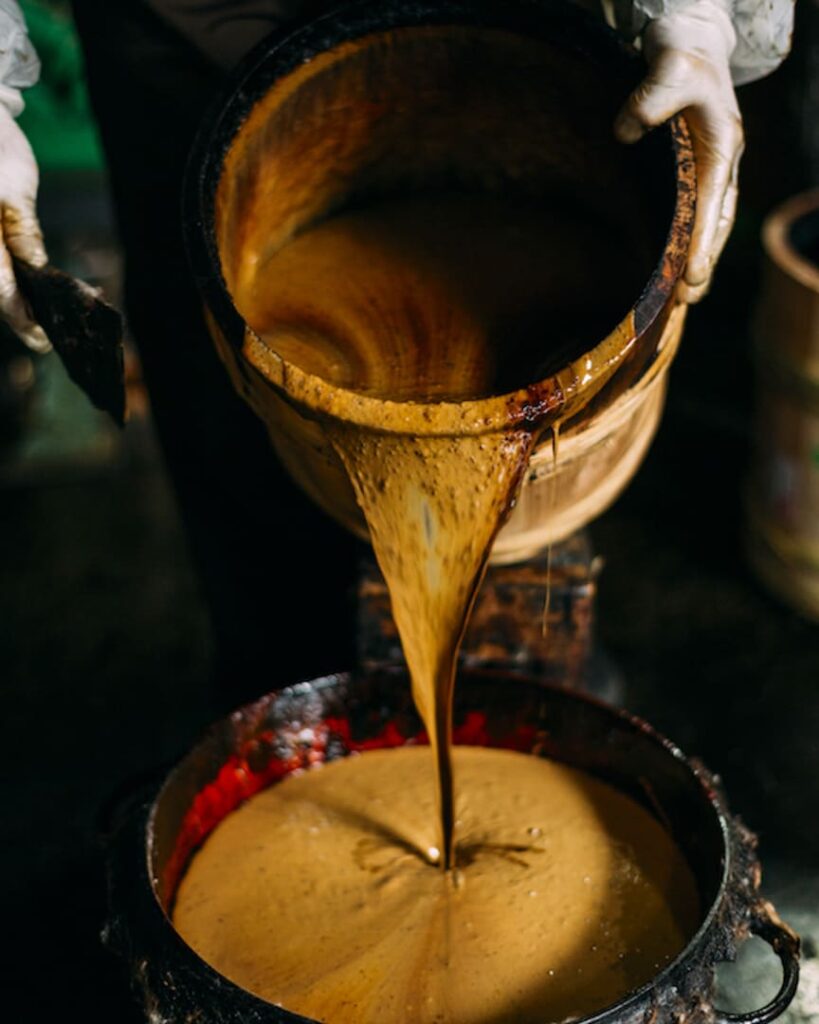
The Arami Urushi is placed into a double boiler.
2.
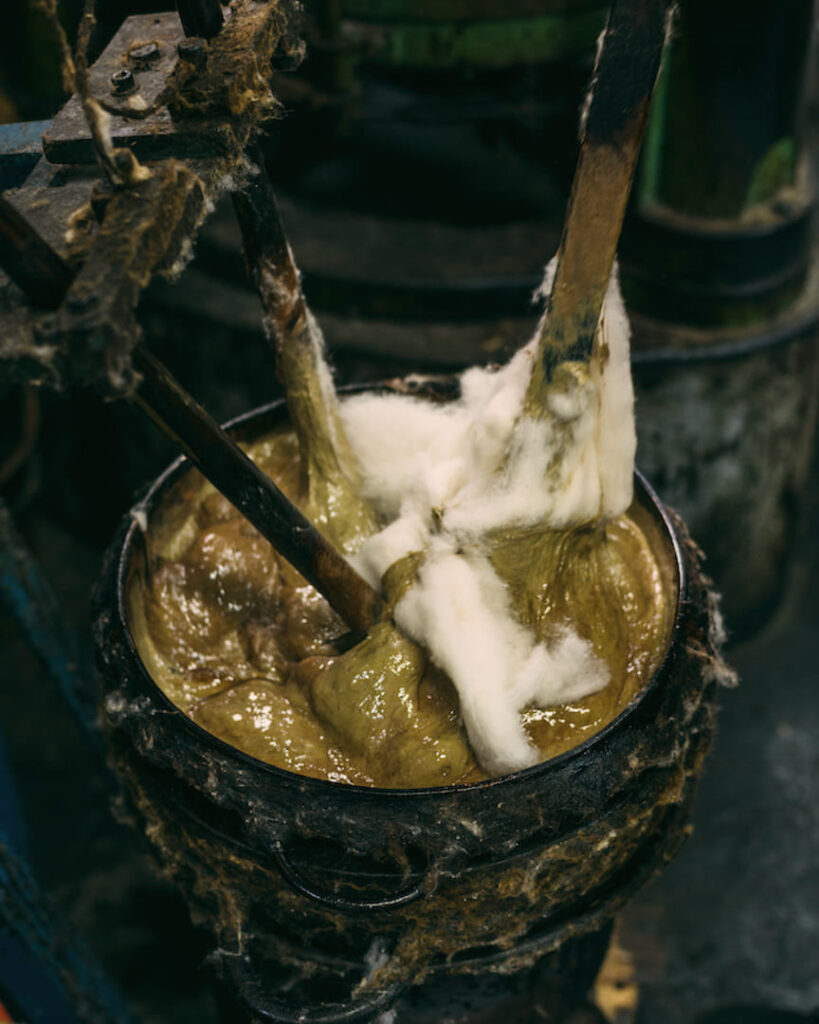
Cotton is kneaded into the Arami Urushi to absorb the wood chips and other impurities.
3.
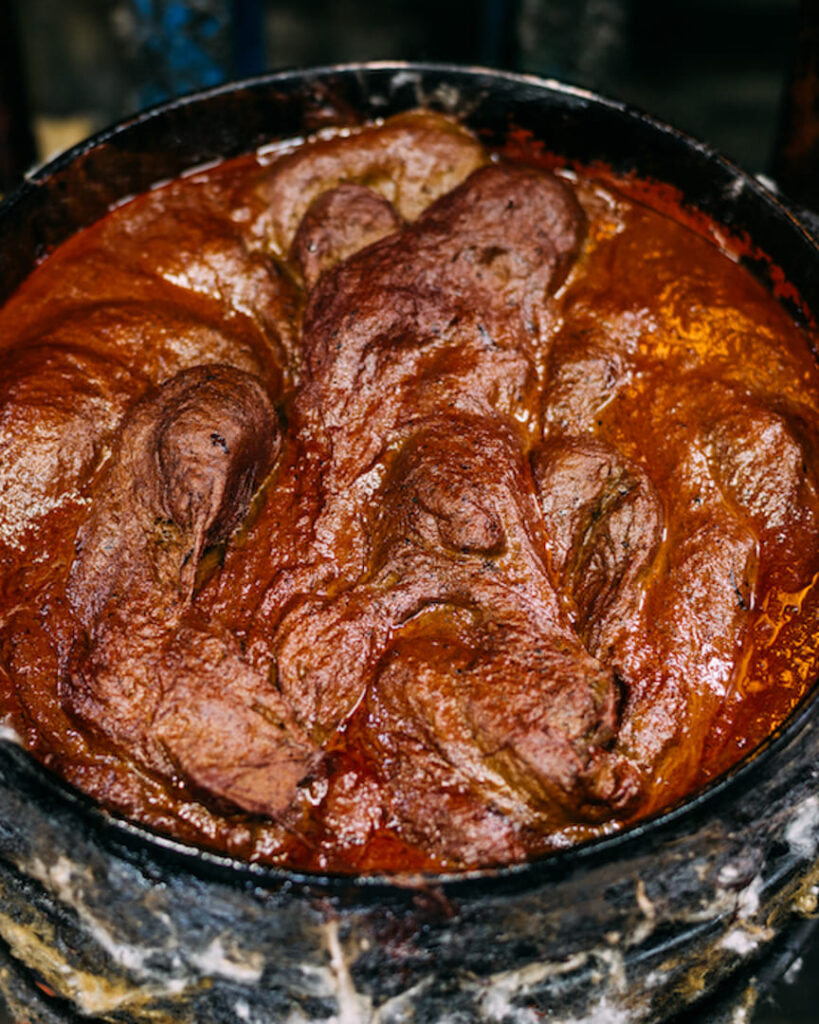
The kneading of the cotton is completed.
4.
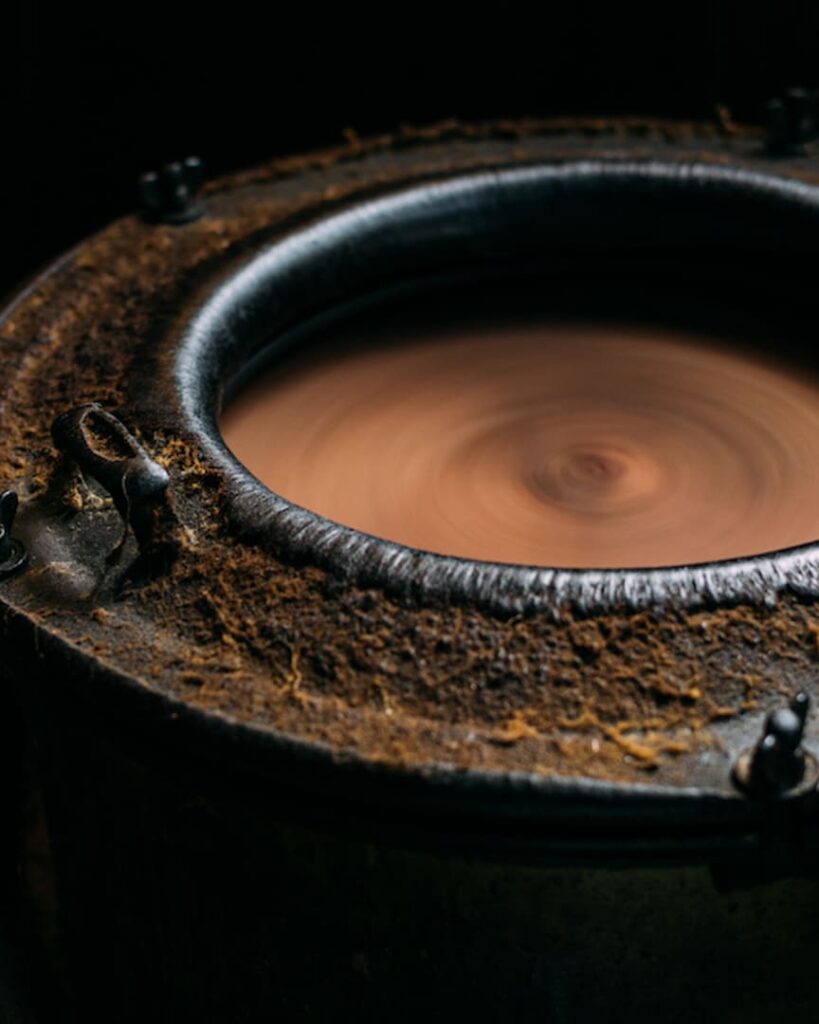
The mixture is then placed into a special centrifuge and filtered through three layers of fine cotton cloths.
5.
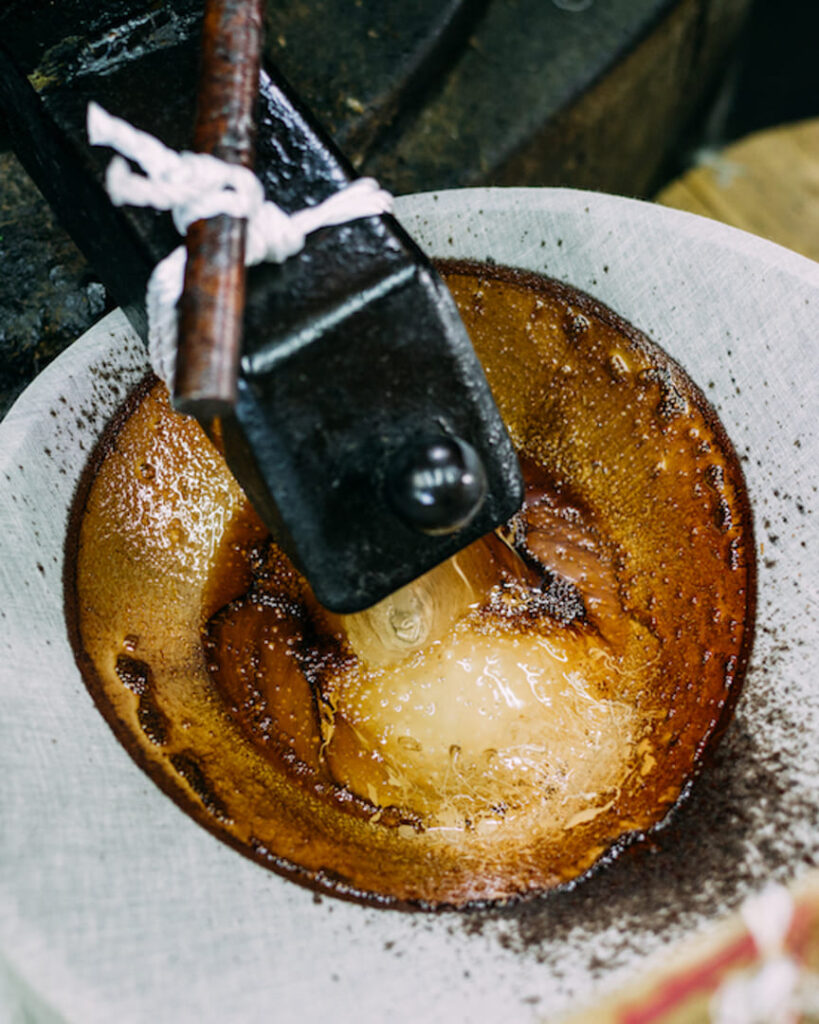
The cotton and fine cotton cloth removes impurities such as wood chips, leaving behind the refined raw Urushi called “Ki-Urushi”.
Refining Urushi for Nuri (painting)
Nayashi: Stirring Ki-Urushi
The Nayashi process is a crucial step in the refinement of urushi. In this stage, raw urushi is placed into a large mixing vessel (Krome-bachi) where it is carefully stirred to evenly distribute the urushi particles. This process is essential for creating a smooth and consistent coating. The speed and duration of the stirring directly influence the urushi’s gloss and drying time.
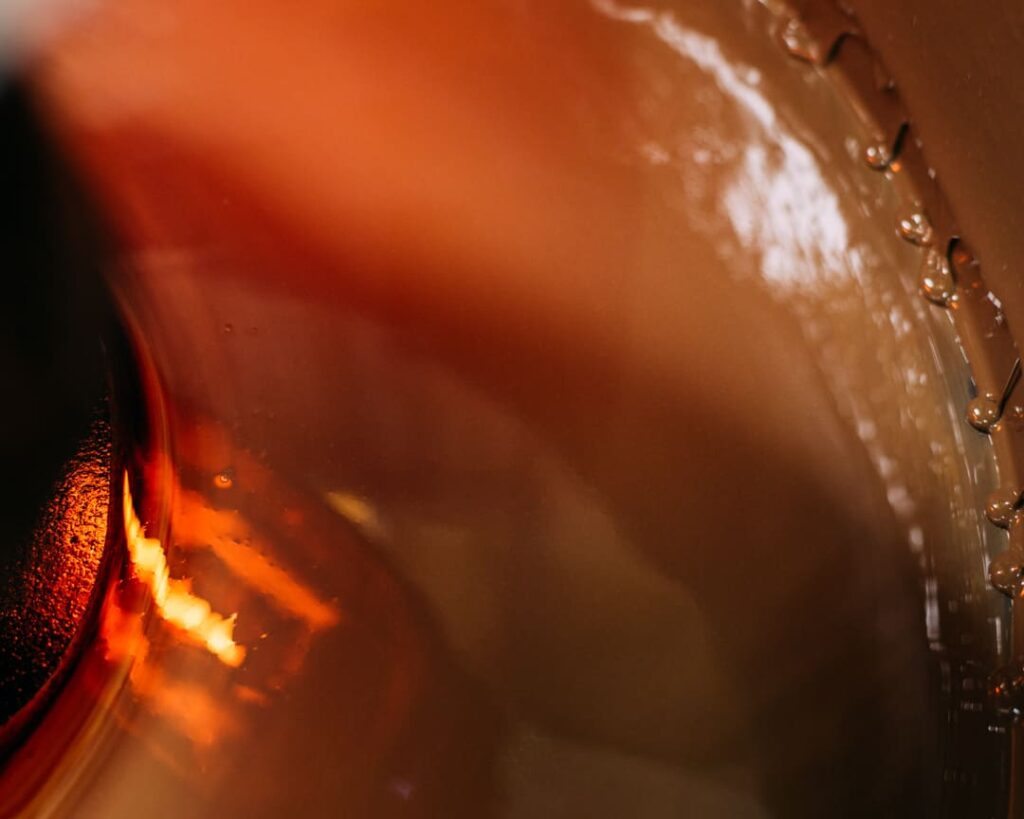
Kurome: Adjusting Moisture Content in Urushi
During the Nayashi process, heat is applied to the Urushi to remove excess moisture. The application of heat not only helps adjust the moisture content but also influences the Urushi’s viscosity and drying speed.
Our company maintains strict control over the temperature to ensure that the enzyme laccase remains active, optimising the Urushi’s quality and performance.
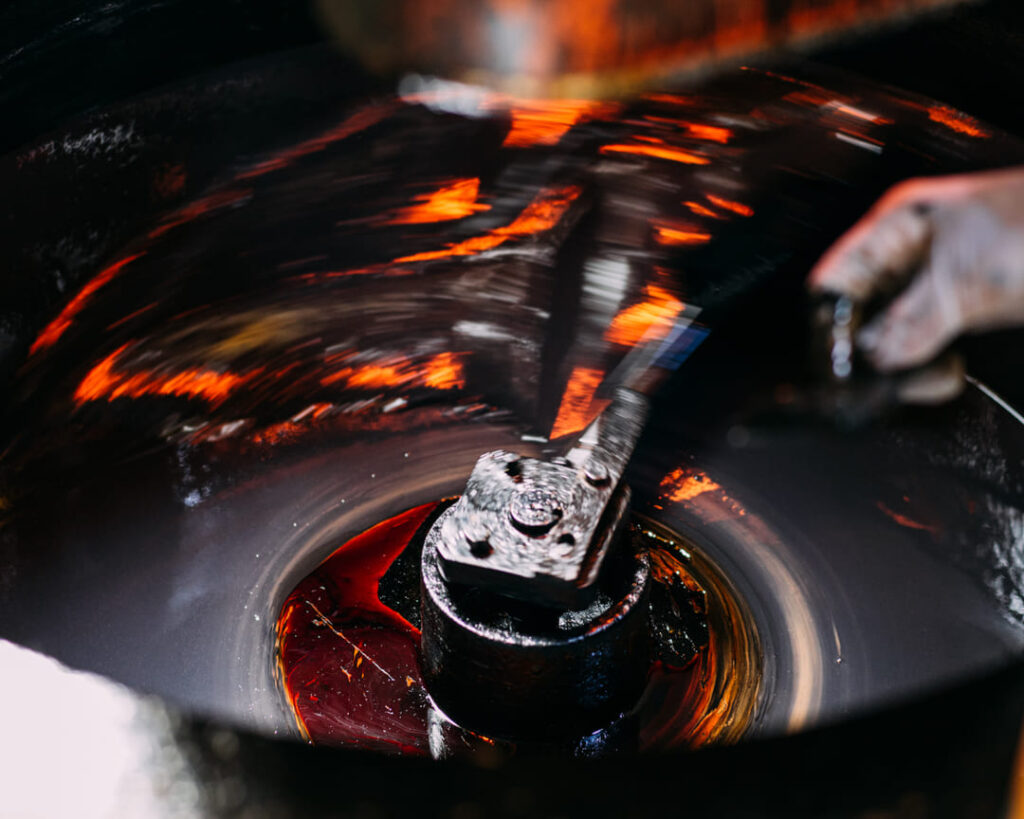
Manufacturing of Coloured Urushi
1.
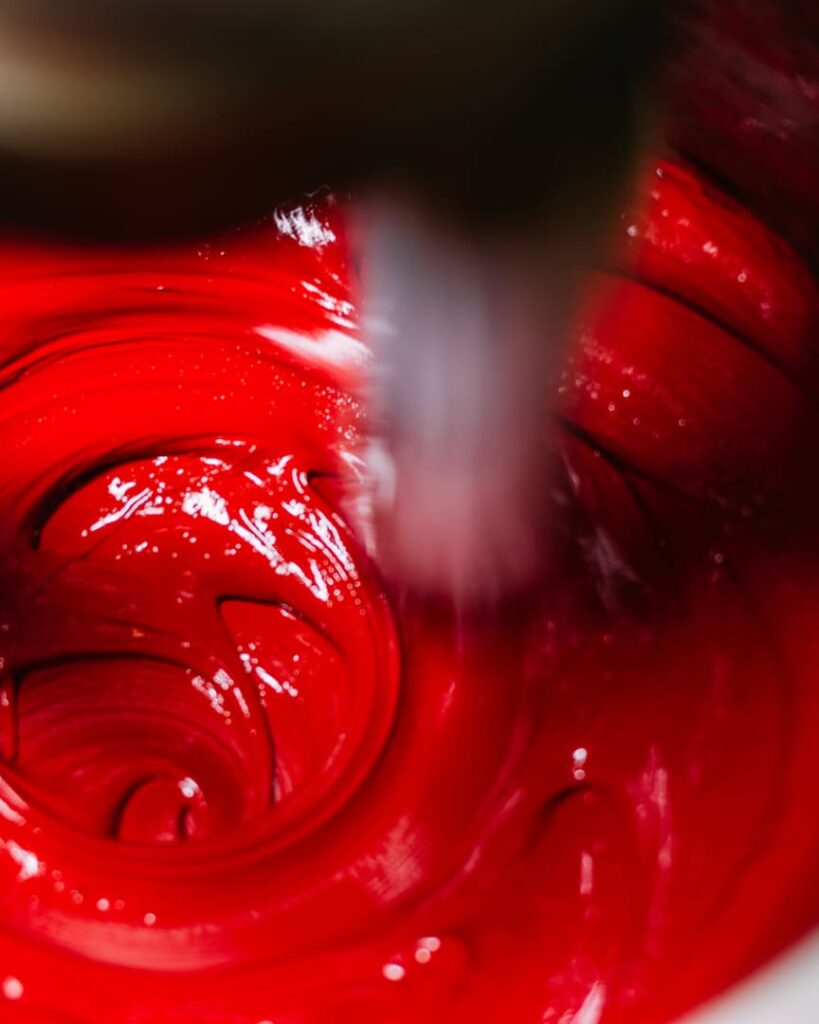
Mixing Urushi with pigments.
2.
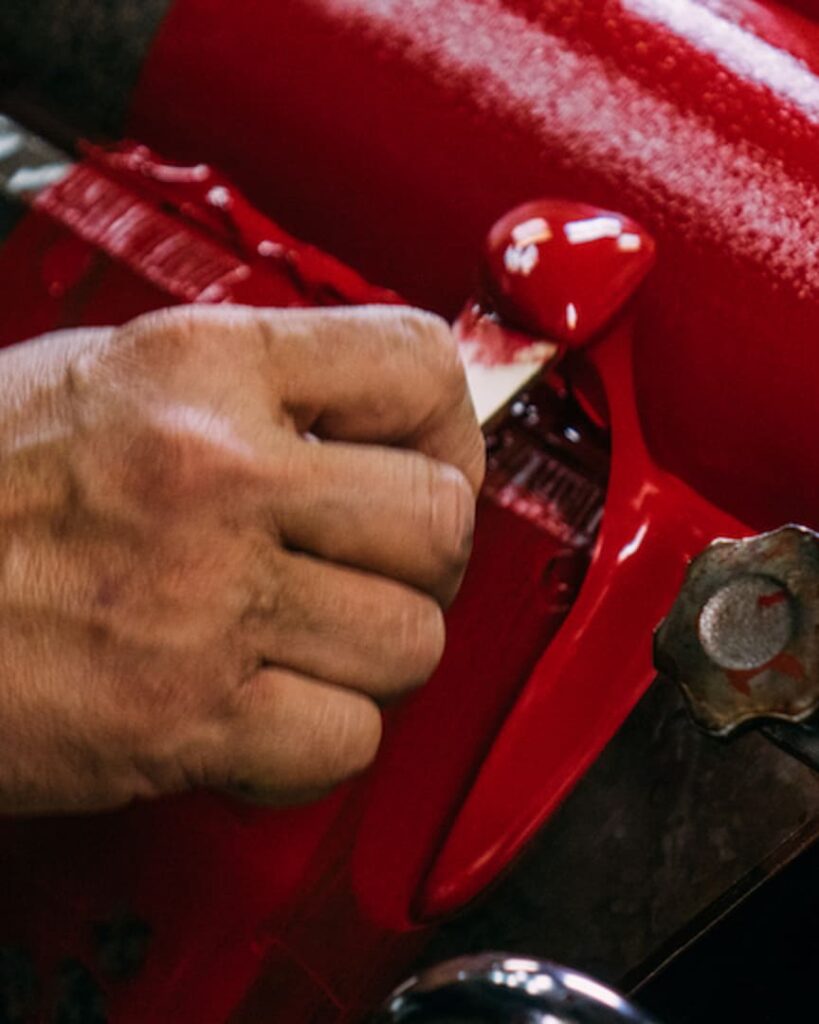
The rough-mixed Urushi and pigments are further refined using a triple roll mill, which smooths and evenly distributes the pigment, creating a high-quality, consistent coloured Urushi with a polished finish.
Mixing and Colour Matching
We blend different types of Urushi to adjust gloss, curing speed, and viscosity according to customer requirements. For custom colours, we combine multiple pigments to create the perfect shade.
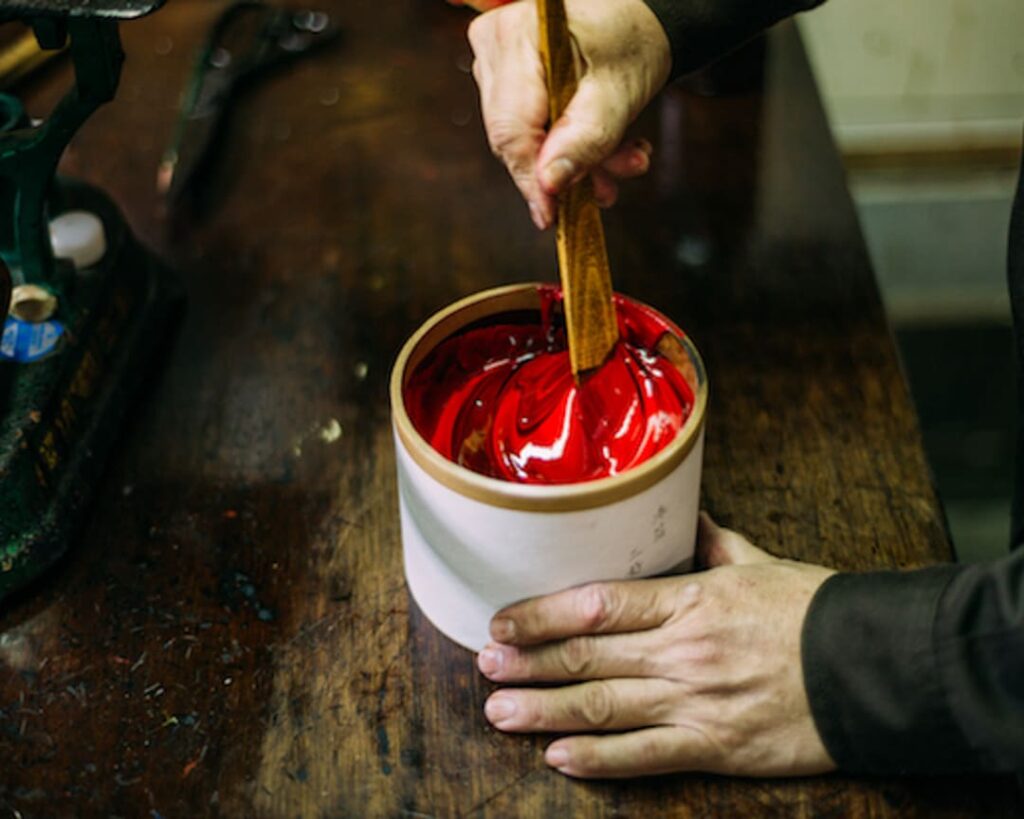
Tests
1.
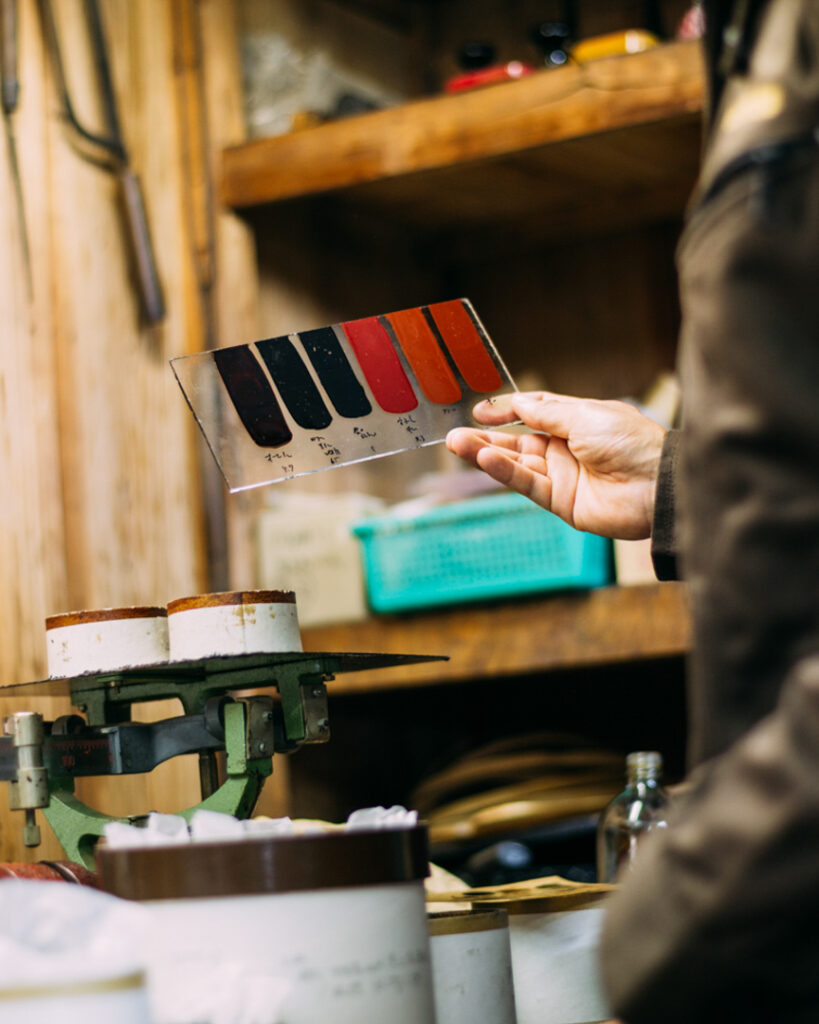
We apply the blended Urushi onto a glass plate with a consistent thickness and check if it meets the customer’s requirements. This process is called “Tsuke wo toru”.
2.
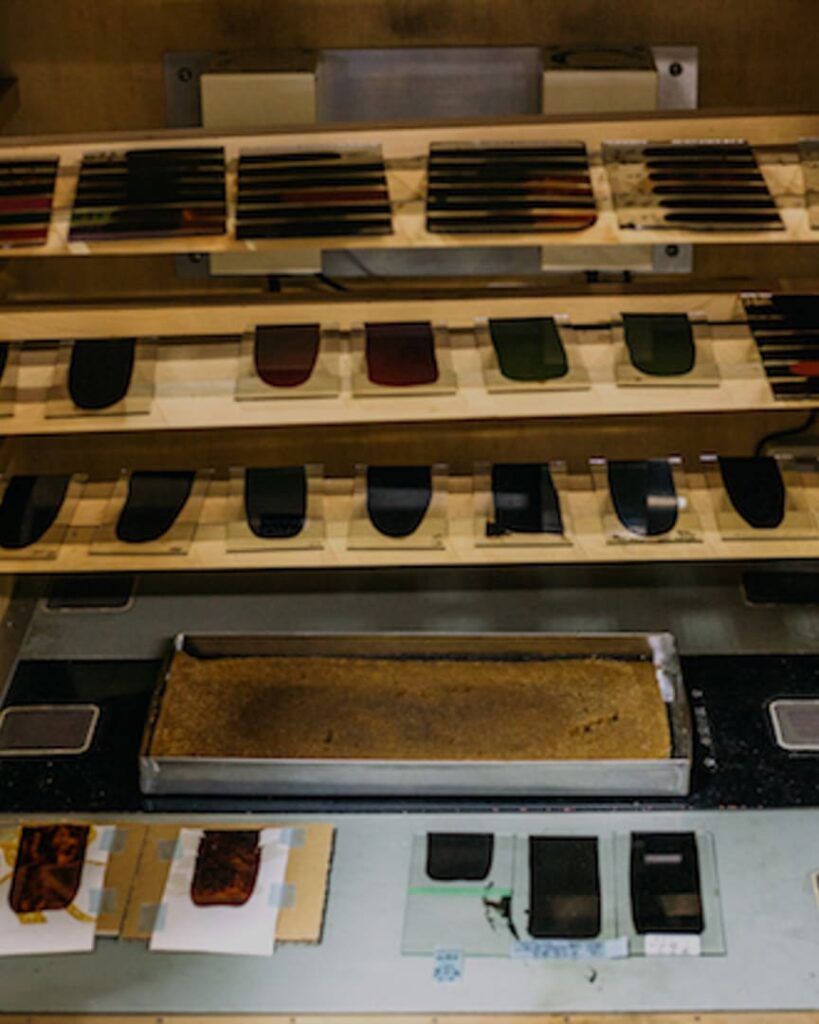
The Urushi-coated glass plate is then placed in a constant temperature and humidity drying room to test the curing speed under controlled conditions. We also check the transparency, gloss, and colour, and save the data for further reference.
Quality control
We ensure that all raw Urushi and various types of refined Urushi are properly stored with strict quality control, allowing us to provide the best quality when fulfilling customer orders.
